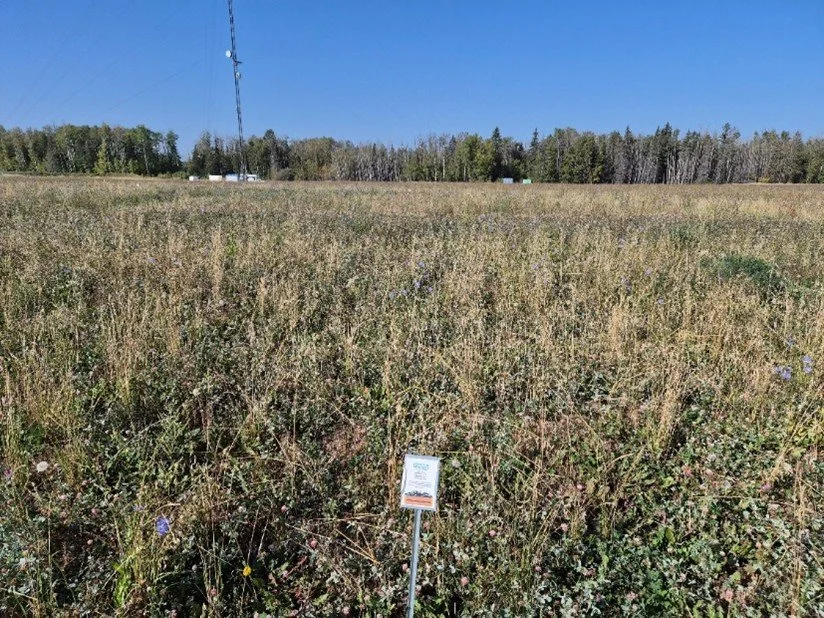News & Insights
Accelerate Weekly is our email newsletter delivered straight to your inbox every Tuesday. Get practical insights, local research updates, and upcoming event info — all tailored for farmers, ranchers, and land managers in Northwest-Central Alberta.
Filter By Category:
Wildwood Soil Health Trial: 2025 In-Season Update
The 2025 Wildwood Soil Health Trial continues to explore how a diverse polycrop blend and several biological amendments influence soil function, forage quality, and field resilience. This fall-season update shares early observations from the third year of this 15-acre project, including feed quality results, field performance notes, and a general yield range. A full report will be released once all data is analyzed.
The 2025 AquaHacking Prairies Challenge Expedition — A Watershed Moment for Prairie Agriculture at Beautiful Dorothy Lake
The 2025 AquaHacking Prairies Expedition at Dorothy Lake brought together innovators, Water Issue Leads, and Indigenous Knowledge Holders to tackle some of the most pressing freshwater challenges facing the Prairie provinces. As the Water Issue Lead for small-scale agriculture, Carri St. Pierre shared the day-to-day realities farmers face with water security while learning from the five finalist teams developing practical tools for monitoring, filtration, invasive species detection, and community preparedness. The event highlighted how collaboration, Indigenous knowledge, and emerging technology can strengthen water resilience for Prairie farms and rural communities—and what to watch for as the finalists head to Calgary for the 2026 Grand Finale.
Boosting Soil Health with Polycrops and Biological Amendments
How can plant diversity and biological amendments improve compacted, clay-heavy soils? At our Wildwood trial site, we’re putting that question to the test. This research project evaluates five biological treatments alongside a diverse polycrop, measuring impacts on soil health, compaction, water infiltration, and forage quality. Learn more about what we’re testing, why it matters for Grey Luvisol soils, and how it could support more resilient pastures across the region.
Story of the Weeds: Tall Buttercup
Tall Buttercup: What Its Yellow Blooms Say About Your Soil
Don’t be fooled by the bright flower… Tall Buttercup is a toxic invader that thrives in soggy, compacted, or overgrazed pastures. Learn what this weed is telling you about your land and how to manage it with smarter grazing, better drainage, and competitive forages.
Story of the Weeds: Scentless Chamomile
Scentless Chamomile: A Pasture Invader in Disguise
With its cheerful white flowers, scentless chamomile might look innocent, but it signals stressed, compacted, and overgrazed soils. This aggressive weed reduces forage quality, offers almost no feed value, and spreads rapidly if left unchecked. Learn what it tells you about your pasture and how to manage it with stronger forages and better grazing strategies.
Story of the Weeds: Canada Thistle
In this week’s ‘Story of the Weeds,’ learn what Canada Thistle says about your soil, its surprising forage potential, and how to reclaim your pasture with smart, integrated strategies.
Story of the Weeds: Orange & Meadow Hawkweed
Story of the Weeds: Orange & Meadow Hawkweed
These bright, daisy-like flowers may look harmless, but hawkweeds are aggressive pasture invaders. Their presence often signals low fertility, compaction, and overgrazing. Learn what these weeds reveal about your land, and how to manage or replace them with resilient forage.
Story of the Weeds: Ox-eye Daisy
Story of the Weeds: Ox-eye Daisy
Ox-eye Daisy might look like a harmless wildflower, but in your pasture, it's telling a deeper story. This persistent weed thrives in acidic, low-fertility, and compacted soils — often where grazing pressure is high and plant competition is low. In this first post of our Story of the Weeds series, discover what Ox-eye Daisy reveals about your land, how it affects your livestock, and what you can do to manage or outcompete it.
Scouting for a Solution: Help Identify Thistle Rust
Join Farming Forward’s province-wide effort to scout for thistle rust fungus—an eco-friendly tool in the fight against Canada thistle. Learn how to identify it and be part of the solution.










